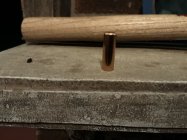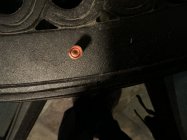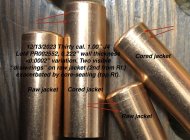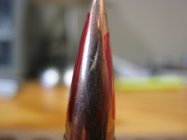jackieschmidt
Gold $$ Contributor
I lubed up 350 30 caliber cores exactly the same way I did the 6mm and core seated the jackets yesterday evening.
I just pointed them up this afternoon.
Just like the 6mm, they came out .0002 larger on the shank than the squeaky clean cores.
They went in the die find, no different than before. But the extraction stroke was definitely more difficult. Almost aggravatingly difficult. I even stopped after a few and re lubed them, adding about 2 more grains of lube. Nothing changed.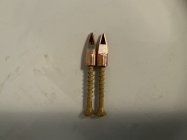
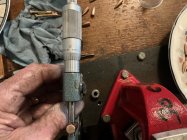
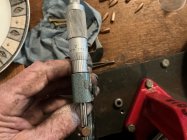
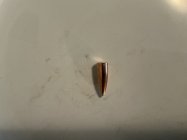
You can see from the two sectioned bullets that the core did progress further up in the jacket. The one on the right is the lubed core bullet.
One other thing. The lubed bullets have a faint shadowy ring just above the base. I don’t know what that is all about. The base is about .0002 larger than the shank.
I don’t wish to be pessimistic, but that ring just above the base bothers me. It’s the first time I have seen it on our bullets.
I’ll test them Sunday.
I just pointed them up this afternoon.
Just like the 6mm, they came out .0002 larger on the shank than the squeaky clean cores.
They went in the die find, no different than before. But the extraction stroke was definitely more difficult. Almost aggravatingly difficult. I even stopped after a few and re lubed them, adding about 2 more grains of lube. Nothing changed.




You can see from the two sectioned bullets that the core did progress further up in the jacket. The one on the right is the lubed core bullet.
One other thing. The lubed bullets have a faint shadowy ring just above the base. I don’t know what that is all about. The base is about .0002 larger than the shank.
I don’t wish to be pessimistic, but that ring just above the base bothers me. It’s the first time I have seen it on our bullets.
I’ll test them Sunday.
Last edited:










